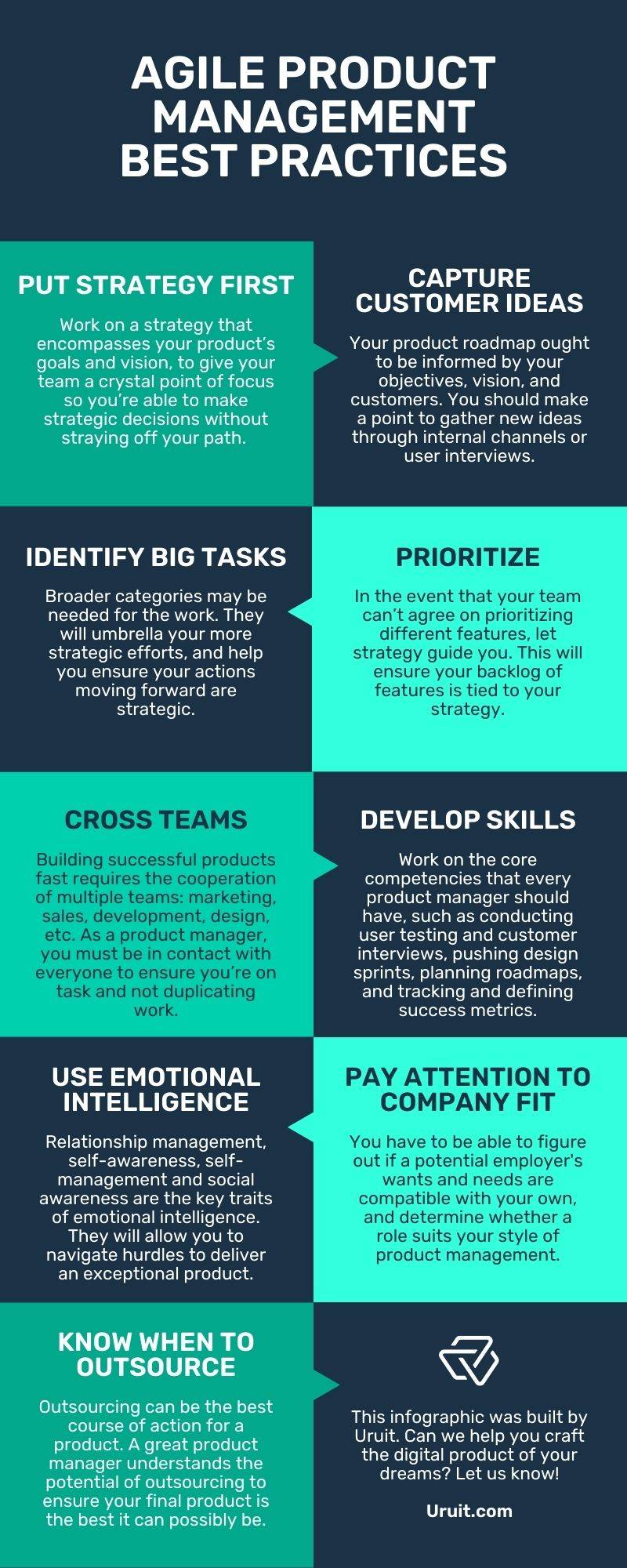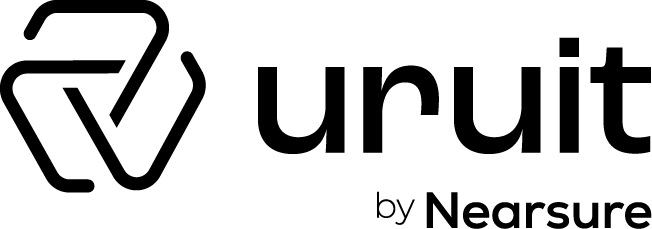Contents
Optimizing Product Management: Essential Best Practices
Product management is essential for the success of a product or service. Good product management ensures a product is streamlined and efficient from inception to disposal. Great product management does all that while balancing the wants and needs of the various stakeholders and customer base as well.
With the right competencies, anyone can become a killer product manager but like any managerial role, there are some best practices you should take on board to fully realize your potential.
Today we’re going to take a deep dive into product management: what it is, why it’s important, and some best-practice tips and tricks to help you become the best possible product manager.
What is product management?
Product management is the function and role within a business that is responsible for a product’s overall success. Working with groups both inside and outside the company, product managers build and execute strategies to make sure a product best meets its strategic and financial goals.
Product management takes care of the entire lifecycle of a product – from inception to disposal. It helps to gauge the changing needs of customers and aids business owners in developing a strategic business model. It also helps create a product road map, ensuring your product stays relevant into the future.
A successful product manager balances the requirements of the product development cycle with the wants and needs of the various stakeholders. In this way, it’s not just a strategic occupation but also one that requires a level of emotional intelligence.
What is agile product management?
Product managers are largely responsible for delivering excellent customer experiences. Anything that helps them do so is worth taking the time to explore. Enter agile product management.
Agile product management means working in a responsive way to deliver updates and products to market fast. The idea is to build product strategy and create product roadmaps in an agile environment. This encourages adaptive product planning and implementation so businesses can rapidly respond to feedback and deliver products that customers love.
Agile product management is the product manager’s answer to the widespread use of agile software methodologies. Such methods put emphasis on early delivery, evolutionary development, and continuous improvement.
Why is agile product management important?
Agile product management acts to redefine the way product managers plan and build products. It used to be that customer experiences were planned, designed, implemented, and tested in a sequential way. Once the product requirements were defined and handed over to the development team, it became somewhat difficult to make any changes. The rate of failure of these large-scale projects highlighted the need for a more flexible approach. Product teams needed a way to shift and adapt to change.
This is where agile comes in. It provides a more fluid approach than traditional product planning and development. Products are built in shorter increments, allowing product managers to adjust the plan as the project progressed. Some key benefits to agile product management include:
- Learning from customers during the product life cycle
- The ability to adjust the near-term roadmap to meet customer requirements
- Delivering value to consumers in an incremental way
- The ability to respond fast to changing requirements
- The ability to collaborate with engineering to rapidly deliver work
Agile product management best practices
Now you know what agile product management is and why it’s important, let’s do a dive into some best practices for applying the theory. What follows are a few tips and tricks that will help you become a better product manager.

1. Strategy first
One of the most effective ways to operate fast while still delivering value is to embed your work in a solid strategy – a strategy that encompasses your product’s goals and vision. The product vision is the center of your product and what you want it to achieve. Your goals are more time-sensitive, defining what you want to achieve over a given time period to help build toward your vision.
Goals aren’t intended to slow you down. Rather, they give your team a crystal point of focus so you’re able to make strategic decisions without straying off your path. Some product managers prefer to focus on the vision rather than the individual goals, but we’d argue that both combined hold more merit.
2. Capture customer ideas
Your product roadmap ought to be informed by your objectives, vision, and customers. You should make a point to gather new ideas through internal channels or user interviews. Just be cautious not to roll with every chunk of feedback that is thrown at you. Most customers are good at communicating their pain points but not all of them can properly articulate a solution.
To make sure you’re only implementing the best ideas, set up an internal scoring system. This should use objective metrics to clearly rank potential features.
3. Identify the big work
Broader categories may be needed for the work. Known as initiatives, they’re the epics or themes of the work. Some examples might include “speed up performance” or “enhance the mobile experience”.
These broad categories can umbrella your more strategic efforts – that is, the individual user stories and features. By defining these categories early, you can ensure your actions moving forward are strategic. In the event you need to switch direction, you can begin by reevaluating the planned initiative. From there, you plan new initiatives that will aid you in meeting your goals.
4. Prioritize strategically
In the event your team can’t agree on prioritizing different features, your development momentum could suffer. Instead of suffering this setback, let strategy guide you in what you need to prioritize.
Relate your features to your initiatives – this is what’s known as the “what”. From there, you’re able to send it off to your development team to be broken down into technical requirements – the “how”.
Operating in this way will ensure your backlog of features is tied to your strategy. It’ll also ensure your team is clear on how each section of work moves the project towards the goals. From there, it’s just a case of plucking each piece of work from the surface of the prioritized list.
5. Cross teams
Building successful products fast requires the cooperation of multiple teams, including marketing, sales, development, design, and support. Development is one of the most essential teams that product managers must collaborate with. This is because your development team is able to provide realistic expectations on how long a chunk of work will take.
That said, every team matters. As a product manager, you must be in constant contact with everyone who impacts the customer experience and the product to ensure you’re on task and not accidentally duplicating work.
6. Develop your core competencies
There are a number of core competencies that every product manager must have. Some may be taught in the classroom but often these skills are built with experience and mentoring. Examples include:
- Conducting user testing and customer interviews
- Pushing design sprints
- Roadmap planning and feature prioritization
- Resource allocation
- Implementing market assessments
- Translating technical-to-business requirements, and vice versa
- Revenue and pricing modeling
- Tracking and defining success metrics
These competencies are the core of any good product manager. The best product managers hone these skills over decades of defining and iterating on products. These managers also excel at reflection – defining how each of these competencies has contributed to the failure or success of their products.
7. Hone your emotional intelligence
A good product manager may be able to navigate a customer interview, but a great one will be able to empathize with the interviewees – tuning into their body language and emotions to figure out the specific pain points the feature or product will address. Honing your emotional intelligence allows you to navigate both external and internal hurdles to deliver an exceptional product.
Emotional intelligence is made up of four key traits. These are:
Relationship management
A great product manager has carefully honed relationship management skills. Through forming trustworthy, authentic connections with both external and internal stakeholders, a great product manager is able to inspire people to help them reach their maximum potential.
Relationship management is also essential when it comes to resolving conflicts, employing negotiation tactics, and working toward a shared goal – all actions that fall within a product manager’s purview.
Self-awareness
As a product manager, you must be self-aware so you may remain objective and avoid projecting your own preferences onto your users. If a product manager is particularly attached to a feature that addresses their own pain points, they may push for that feature despite reams of evidence stacked against it. A self-aware product manager knows not to do this and is adept at remaining objective in the face of even the most enticing feature.
Self-management
Being a product manager can be a stressful affair. Balancing the wants and needs of the CEO, development team, customers, and more can be a full-time job. That’s not counting the management of deadlines, market demands, revenue targets, resource constraints, and prioritization conflicts either. A product manager must be able to maintain their calm under pressure. This is where self-management comes in.
Self-management ensures you know when to push and when to take a step back to breathe. It also ensures you don’t fall victim to burnout.
Social awareness
The competencies that make one socially aware include empathy, service, and organizational awareness. Product managers have to understand customers’ emotions and concerns about the product just as much as they understand the concerns of the sales team, or the development team, etc.
The key is to build a deep understanding of how your business operates and develop social capital to help you influence the success of your product.
8. Pay attention to company fit
Even the best product managers with the most well-developed core competencies can fall victim to an ill-fitting workplace. This is where understanding your own professional wants and needs is paramount. You have to be able to gauge a potential employer and figure out if their wants and needs are compatible with your own.
There’s no standard job description for a product manager. Each role is defined by the size of the organization, the type of product, the stage of the product, the industry, and more. The trick is to determine whether a role suits your style of product management.
9. Know when to outsource
Outsourcing a product’s design and development isn’t always the answer but sometimes it can be the best course of action for a product. A great product manager understands the limitations of their internal teams and is able to plan around them. By staying open to the prospect of outsourcing work and its benefits, you’ll ensure your final product is the best it can possibly be.
When outsourcing, your interpersonal skills will get a run for their money. You’ll have to balance not only internal stakeholders but also the stakeholders associated with the company you’re outsourcing to. Keep your cool and you’ll be able to balance the wants and needs of all involved.
Become a great product manager
Product management is an incredibly rewarding role. From inception to distribution, seeing a product go-live is one of the best feelings in the world. Anyone can become a great product manager with the right know-how and a can-do attitude. With these tips and tricks you’ll be well on your way to becoming a great product manager.



